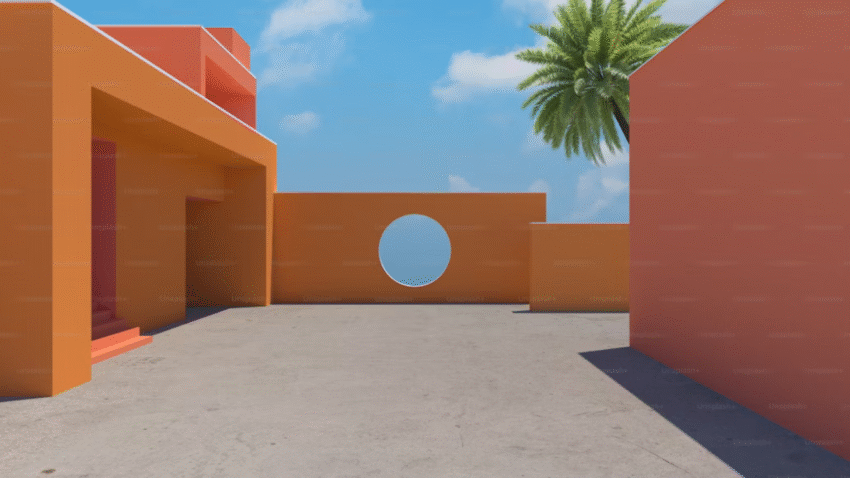Introduction
Uneven pathways don’t just spoil the look of your yard—they’re a safety hazard. Raised, sunken, or wobbly sections can trip guests, damage shoes, and even lead to liability issues. Over time, soil settling, tree roots, and weather damage can cause pavers, concrete, or stone slabs to shift out of place. Learning how to repair uneven pathway sections will help you restore a smooth, attractive, and safe walkway.
Why Repairing Uneven Pathways Matters
It’s easy to ignore an uneven section of a walkway, but small problems quickly become big ones. Here’s why fixing them matters:
- Safety first – Prevent trips, slips, and falls on raised or loose sections.
- Curb appeal – A smooth, well-maintained pathway enhances your property’s look.
- Prevent further damage – Ignoring uneven areas leads to cracks, broken pavers, or soil erosion.
- Longevity – Repairs protect the foundation and extend the life of your walkway.
- Property value – A well-maintained landscape boosts resale appeal.
By repairing uneven sections promptly, you’ll protect both your investment and your visitors.
Step-by-Step Guide to Repairing Uneven Pathway Sections
1. Identify the Cause of Unevenness
Before you fix the problem, figure out what caused it.
- Soil settling: Common after years of rain, erosion, or poor compaction.
- Tree roots: Roots push up pavers, bricks, or concrete slabs.
- Poor drainage: Standing water undermines the base.
- Heavy loads: Frequent traffic or vehicles can shift materials.
Understanding the cause ensures your repair lasts.
2. Gather Tools and Materials
Depending on the pathway type, you’ll need:
- Flathead screwdriver or pry bar (for pavers/bricks)
- Shovel and tamper
- Gravel or stone dust (for base repair)
- Level
- Replacement pavers or slabs (if damaged)
- Jointing or polymeric sand (for pavers)
- Concrete mix or patch (for concrete pathways)
3. Remove the Uneven Section
Carefully take out the affected materials.
- For pavers or bricks: Pry them out gently one by one.
- For stone slabs: Lift the slab carefully with help if needed.
- For concrete: Break out small uneven sections with a chisel and hammer.
Set aside reusable pieces for resetting later.
4. Inspect and Repair the Base
Most uneven pathways happen because of a weak base.
- Remove old sand, soil, or gravel beneath the lifted section.
- Check for water pooling or soft soil.
- Add a 2–4 inch layer of gravel or stone dust.
- Compact the base firmly with a tamper.
- Use a level to ensure it matches surrounding areas.
5. Reset the Pathway Material
Now reinstall the pavers, bricks, or slabs.
- For Pavers/Bricks:
- Place pavers back onto the leveled base.
- Tap gently with a rubber mallet to set them flush with neighbors.
- For Stone Slabs:
- Reposition slab carefully onto the repaired base.
- Check for rocking or wobbling and add more base if needed.
- For Concrete Pathways:
- If the uneven area was small, fill with new concrete patch.
- For larger sections, pour fresh concrete over a rebuilt base.
6. Refill Joints and Gaps
Lock materials in place to prevent shifting again.
- Sweep polymeric sand into joints between pavers.
- Mist lightly with water to activate binding agents.
- For slabs or concrete, use mortar or filler to seal gaps.
7. Check for Stability
Walk across the repaired section to ensure it feels solid.
- Adjust by adding more sand or gravel underneath if necessary.
- Confirm that all pieces sit level with surrounding pathway areas.
8. Prevent Future Problems
Address the root cause to keep your walkway level longer.
- Trim nearby tree roots or consider root barriers.
- Improve drainage with edging, French drains, or slope corrections.
- Avoid heavy loads like vehicles on walkways not designed for them.
Common Mistakes to Avoid
- Mistake 1: Ignoring the Base
Solution: Always rebuild and compact the base before resetting pathway materials. - Mistake 2: Using Regular Sand Only
Solution: Use polymeric sand, which hardens and prevents weeds and shifting. - Mistake 3: Forcing Pavers Into Place
Solution: Adjust the base instead of hammering—this prevents cracking. - Mistake 4: Not Matching Replacements
Solution: Always keep spare pavers or bricks from the original project for seamless repairs. - Mistake 5: Quick Patching Concrete
Solution: For lasting results, replace sections properly rather than applying thin patches.
Extra Pathway Tips & Hacks
- Keep Spares Handy: Always store extra pavers or slabs from installation for future repairs.
- Seasonal Maintenance: Inspect pathways each spring and fall to catch uneven spots early.
- Seal for Protection: Apply sealant to bricks, pavers, or slabs to prevent water damage.
👉 Want related help? Check out our guide on how to replace broken pavers in a walkway.
Conclusion
Repairing uneven pathway sections is a straightforward DIY project when done correctly. By removing the damaged area, rebuilding the base, resetting the materials, and sealing joints, you’ll create a smooth, safe, and attractive walkway.
💡 Pro Tip: Always address the root cause—whether it’s soil settling, tree roots, or poor drainage—to ensure your repair lasts for years.
